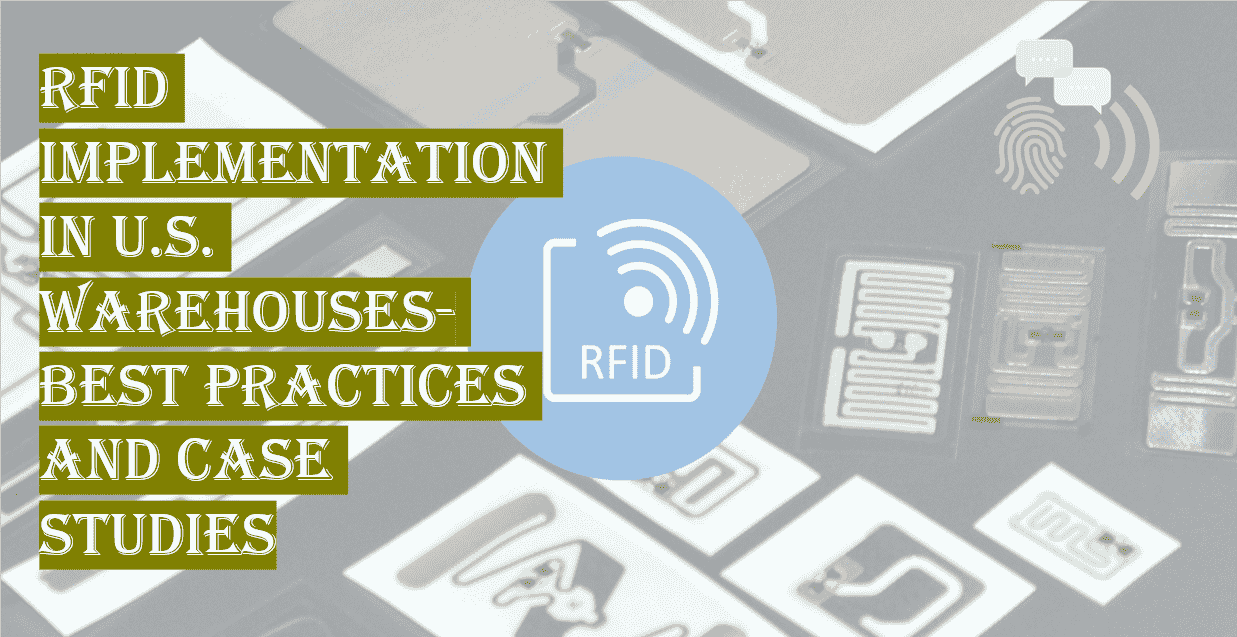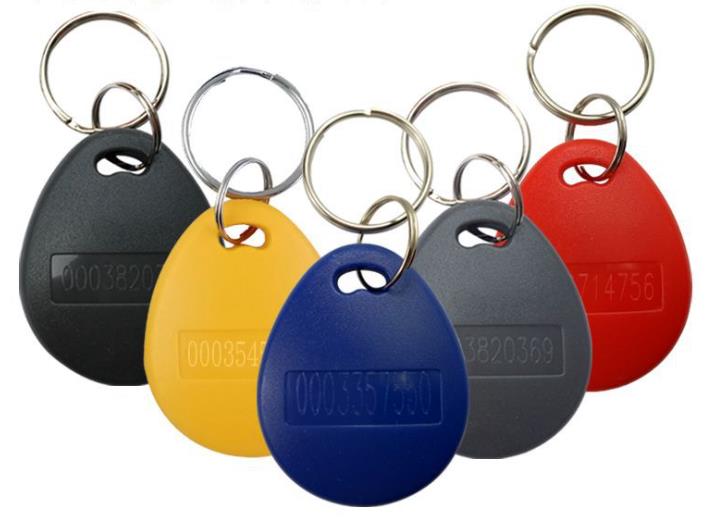RFID Implementation in U.S. Warehouses: Best Practices and Case Studies
In the rapidly evolving logistics and supply chain industry, the need for efficiency and accuracy has never been more pressing. Radio Frequency Identification (RFID) technology has emerged as a game-changer, offering real-time tracking, enhanced inventory accuracy, and streamlined operations. As warehouses in the U.S. continue to face pressure to improve efficiency, the adoption of RFID technology has proven to be a powerful solution. This article explores the best practices for implementing RFID in U.S. warehouses, as well as success stories and practical tips for seamless integration.
Table of Contents
- Introduction
- What is RFID?
- Why RFID in Warehouses?
- Best Practices for Implementing RFID in U.S. Warehouses
- Case Studies: RFID Success Stories in U.S. Warehouses
- Tips for Smooth RFID Implementation
- Conclusion
What is RFID?
RFID is a wireless technology that uses electromagnetic fields to automatically identify and track tags attached to objects. In the context of warehousing, RFID tags are typically affixed to goods, pallets, or containers, allowing warehouse staff to instantly track their location and status. RFID systems consist of three main components: the tags, the readers, and the backend software that processes the data.
Why RFID in Warehouses?
The primary goal of implementing RFID in warehouses is to improve operational efficiency. Traditional barcode systems require line-of-sight scanning, which can be slow and prone to human error. RFID, on the other hand, allows for non-line-of-sight, bulk scanning, meaning that hundreds or thousands of items can be tracked in real-time without manual scanning.
Here are some benefits of RFID technology for warehouse management:
- Improved Inventory Accuracy: RFID ensures that inventory data is real-time, reducing the chances of errors and stockouts.
- Enhanced Visibility: With RFID, warehouses gain better visibility of the flow of goods, from receiving to shipping.
- Reduced Labor Costs: Automated data collection reduces the need for manual inventory checks, which in turn reduces labor costs.
- Faster Stocktaking: RFID allows for faster and more frequent inventory audits, improving overall operational speed.
- Better Asset Management: RFID can track equipment and assets, reducing the risk of loss or misplacement.
Best Practices for Implementing RFID in U.S. Warehouses
Implementing RFID in a warehouse environment is a complex process that requires careful planning and execution. Below are some best practices to follow to ensure a smooth and successful implementation.
1. Assess Your Needs and Goals
Before diving into the technicalities of RFID deployment, it's crucial to assess your warehouse’s needs and objectives. Ask yourself:
- What are the key pain points that RFID will address (e.g., inventory accuracy, labor costs, order fulfillment speed)?
- What items or processes will benefit most from RFID tracking?
- What are your goals in terms of efficiency, cost reduction, and scalability?
Understanding these factors will help you tailor the RFID implementation to your specific business needs.
2. Choose the Right RFID Technology
Not all RFID solutions are created equal. There are two main types of RFID systems: passive and active.
- Passive RFID: This is the most commonly used in warehouses. Passive tags don’t have a battery and rely on the reader’s signal for power.
- Active RFID: These tags have their own power source, making them suitable for longer-range tracking of larger assets.
Choosing the right type of RFID tag, as well as the appropriate readers, will depend on your warehouse layout, inventory types, and tracking needs.
3. Integrate RFID with Existing Systems
RFID technology should seamlessly integrate with your existing warehouse management system (WMS) or enterprise resource planning (ERP) software. Ensure that the RFID system can synchronize data with your existing processes to maximize efficiency. This may require custom software development or third-party middleware to ensure smooth data flow between RFID hardware and backend systems.
4. Train Your Staff
RFID technology, like any other advanced system, requires proper training. Employees should understand how to use RFID equipment, interpret data, and troubleshoot minor issues. Regular training and ongoing support will ensure a smooth transition and reduce the chances of operational hiccups.
5. Start Small and Scale Gradually
It’s always wise to start small when implementing RFID. Begin with a pilot project that targets a specific section of the warehouse or a specific inventory category. Once the system is optimized and the processes are running smoothly, you can scale the technology across the entire warehouse or distribution center.
6. Maintain Consistent Monitoring and Evaluation
After RFID implementation, constant monitoring is crucial. Regularly evaluate the performance of the system to ensure it’s meeting your business goals. This includes tracking inventory accuracy, system uptime, and labor savings.
Case Studies: RFID Success Stories in U.S. Warehouses
1. Walmart’s RFID Transformation
Walmart, one of the largest retailers in the world, has been at the forefront of RFID adoption. The company implemented RFID to streamline inventory management, enhance stock visibility, and reduce the risk of out-of-stock situations. By integrating RFID with its existing WMS, Walmart was able to achieve real-time tracking of goods, ensuring products were always available on store shelves. The implementation resulted in better inventory control, reduced stock-outs, and enhanced customer satisfaction.
2. The Home Depot’s RFID Rollout
The Home Depot adopted RFID technology to improve its warehouse operations and supply chain management. The company used RFID to track the movement of large equipment and tools, which helped reduce losses and theft. Additionally, RFID-enabled inventory tracking allowed Home Depot to optimize stock levels and improve fulfillment accuracy. As a result, the company saw faster processing times, improved inventory accuracy, and a more efficient supply chain.
3. Ford Motor Company’s RFID Success
Ford implemented RFID in its parts distribution centers to track the movement of auto parts in real-time. With RFID tags on parts, Ford was able to achieve significant improvements in inventory accuracy and order fulfillment speed. The company also used RFID to streamline the tracking of high-value components, reducing the risk of theft or loss. By integrating RFID with its logistics network, Ford saw a reduction in inventory carrying costs and faster time-to-market for parts.
Tips for Smooth RFID Implementation
- Work with RFID Experts: Partner with RFID vendors who understand your industry and can offer tailored solutions.
- Test the System Before Full Deployment: Run pilot tests in controlled environments to identify potential issues before full-scale implementation.
- Focus on Data Quality: Ensure that the data collected through RFID is accurate and integrated correctly into your existing systems.
- Evaluate ROI: Track key performance indicators (KPIs) such as reduced labor costs, improved inventory accuracy, and faster order fulfillment to evaluate the success of your RFID system.
Conclusion
RFID technology has proven to be a transformative tool for warehouses in the U.S., helping companies improve operational efficiency, reduce costs, and enhance customer satisfaction. By following best practices, leveraging successful case studies, and ensuring smooth integration, businesses can maximize the potential of RFID in their warehousing operations. As the technology continues to evolve, RFID will likely play an even more pivotal role in optimizing supply chains and enabling smarter, more connected warehouses.



